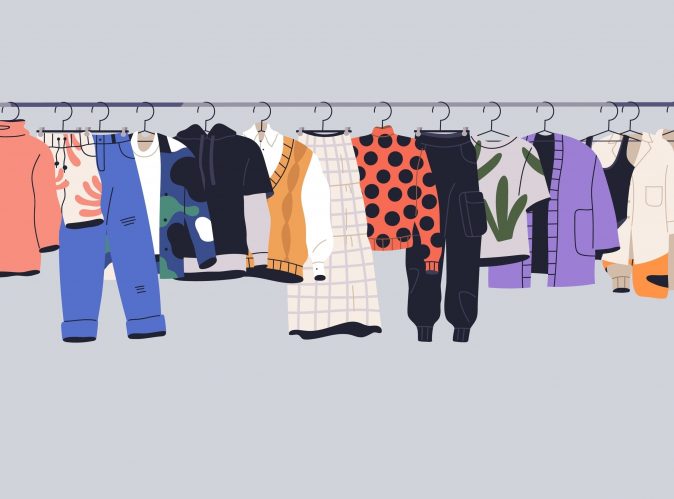PARIS – Is adhering to advertising standards guidelines really that difficult? This is the question I ask myself on hearing talk of ‘green-hushing’, the strategy which sees businesses adopt a radio-silence approach to outlining environmental goals and marketing. The theory goes that many businesses are now remaining quiet about their sustainability work for fear of being called out for greenwashing or falling foul of guidelines around marketing.
In the apparel sector, this issue can partly be traced back to last summer when the Norwegian Consumer Authority banned the use of Higg Index ‘sustainability profiles’ on clothing labels because they broke guidelines under Norway’s Marketing Control Act, which covers green claims made by businesses. We have also seen a number of civil lawsuits brought against fashion brands over greenwashing, notably in the US and France.
The decision taken by Norway threw a major spanner in the works for the Sustainable Apparel Coalition and its members, a number of whom had plans to roll out the use of Higg labels in the coming years. While many applauded Norway for taking this stance and taking the issue of greenwashing seriously, others have taken a different tack.
“We don’t have time to wait for perfection,” seems to be the gist of their arguments.
These issues were at the fore during a recent debate on greenwashing hosted by the OECD which I’d encourage readers to watch here: Greenwashing your clothes? Addressing unsubstantiated sustainability claims in the garment and footwear sector (oecd-events.org)
Among the speakers in Paris were Tonje Drevland, assistant director, supervisory department of the Norwegian Consumer Authority and Jeremy Lardeau from the Sustainable Apparel Coalition.
It was a lively debate covering a range of issues but the key themes from this perspective appeared to be how much leeway should be allowed with marketing claims, and whether a claim made in one jurisdiction could also be made in another.
Discussing Norway’s decision last summer, Lardeau seemed to suggest that Higg sustainability profiles might not have been banned in other countries and that there was a lack of harmonisation across different jurisdictions. An audience member alluded to a similar point, suggesting businesses were ‘greenhushing’ and not willing to shout about their sustainability work due to concerns about being called out and the lack of harmonisation across borders.
To unpack this point, it is worth going back to the original ruling by the NCA. More can be found out about the rulings on the NCA’s website: nca-and-acm-joint-guidance-environmental-claims-based-on-higg-msi.pdf (forbrukertilsynet.no)
I would encourage people particularly to read from page 3 onwards on the Higg MSI. As verdicts go, this is as damning as they come.
By using these Higg labels, Norrøna and H&M did not simply break the rules around green marketing and advertising. They rode a coach and horses through them. Having followed this case closely, even to the untrained (legal) eye, it was crystal clear why these labels could not hold water.
The only surprise is that the SAC has commissioned a (no doubt hugely expensive) consultation into the Higg MSI to be carried out by KMPG. It’s impossible to see a place for it in the current regulatory landscape. But that’s by the by.
The point being made here is goes back to the cries of ‘we can’t afford to wait for perfection.’ Perhaps we can’t. But if companies are to make sustainability claims, they surely have to be grounded in some form of realty.
To go back to last summer, Tonje Drevland was quoted in the Guardian, saying: “Wrong data is worse than no data. You have to know that what you’re saying is correct. You have to have facts supporting what you’re saying.”
This rather obvious point should not need spelling out. If eco labels are about encouraging consumers to make purchasing decisions which are better for the planet, labels based on dodgy data – and this has always been Higg’s problem – will logically lead to consumers making purchasing decisions which are sub-optimal.
The other issue here relates to rules around marketing. The consumer authorities in the UK, Holland and Norway have all issued guidelines around how marketing claims can be made in the past 18 months. Similar moves are afoot in the US via the Federal Trade Commission.
Do rules really differ from jurisdiction to jurisdiction as some have claimed? I’m having trouble buying this argument.
The UK’s Competition and Markets Authority issued guidelines for businesses on making green claims in 2021. The main criteria are that claims are specific and avoid vague terms, are truthful and accurate, clear and unambiguous, substantiated, do not omit important information and consider and consider the full lifecycle of a product.
Rocket science this ain’t. The Dutch have issued similar guidelines. The fact they bare an uncanny resemblance to those from the CMA is no coincidence. As Drevland pointed out at the OECD meeting, consumer authorities talk to each other and share best practice.
If a business wants to make green claims, the rules around advertising are quite clear and not difficult to interpret. There is no need for any business to be ‘green-hushed’ if it has a credible green claim and can provide decent evidence to support it.
One final thought. Each day, this publication receives dozens of press releases from businesses in the apparel space and textile value chain promoting this or that sustainable innovation. If anything, green claims appear more prevalent than ever. Just about every fashion brand has a huge section about sustainability on its website. Even, remarkably, the likes of Boohoo. This certainly was not the case a decade ago.
Thus, from this perspective, it’s hard to argue that green-hushing is even a thing. More likely is that fashion brands are now thinking twice before making sustainability claims which lack credibility or scientific basis. Which, one would argue, is a cause for celebration, not concern.


